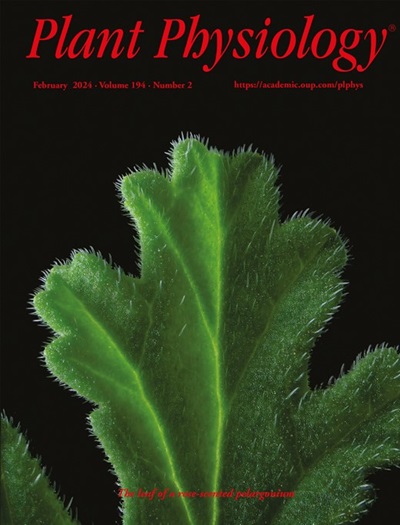The Transcription Factor LpWRKY65 Enhances Embryogenic Capacity through ROS Scavenging during Somatic Embryogenesis of Larch
IF 6.9
1区 生物学
Q1 PLANT SCIENCES
引用次数: 0
Abstract
Somatic embryogenesis is a powerful system for studying embryo development and scaling up the production of elite genetic material. Somatic embryogenesis has been well established in Larix principis-rupprechtii, a Chinese larch species dominant in the world’s largest man-made forest. However, genotype-dependent embryogenic variations hinder large-scale forestry, and the molecular mechanisms remain unclear. Here, we constructed stage-specific developmental transcriptomes of the somatic embryogenesis process using two lines with contrasting embryogenic capacities. Clustering and co-expression analyses identified LpWRKY65 as a central hub gene highly expressed in early somatic embryogenesis stages and with significantly higher expression in the high-embryogenic-capacity cell line (HEL) compared to the low-embryogenic-capacity cell line (LEL). Overexpressing LpWRKY65 significantly increased somatic embryo yield and quality. DAP-seq and RNA-seq were combined to identify a set of target genes downstream of and responsive to LpWRKY65, particularly including genes involved in reactive oxygen species (ROS) scavenging. We identified LpHmgB10 as a critical downstream regulator of LpWRKY65. LpWRKY65 directly binds to the W-box in the promoter of LpHmgB10, markedly enhancing its transcriptional activity. ROS profiling further demonstrated that overexpression of LpWRKY65 or LpHmgB10 enhances ROS scavenging and promotes a stable redox environment, which is crucial for improving embryogenic capacity. These findings suggest that LpWRKY65 regulates the cellular redox environment to promote embryogenic differentiation and somatic embryo development, advancing somatic embryogenesis research in conifers.转录因子LpWRKY65在落叶松体细胞胚胎发生过程中通过清除ROS增强胚胎发生能力
体细胞胚胎发生是研究胚胎发育和扩大精英遗传物质生产的一个强有力的系统。华北落叶松(Larix principal -rupprechtii)是世界上最大的人工林中的优势种。然而,依赖基因型的胚胎发生变异阻碍了大规模林业,其分子机制尚不清楚。在这里,我们用两种不同胚胎发生能力的细胞系构建了体细胞胚胎发生过程的阶段特异性发育转录组。聚类分析和共表达分析发现,LpWRKY65是一个在体细胞胚发生早期高表达的中心枢纽基因,在高胚发生能力细胞系(HEL)中的表达明显高于低胚发生能力细胞系(LEL)。过表达LpWRKY65显著提高了体胚产量和质量。结合DAP-seq和RNA-seq鉴定了LpWRKY65下游和响应的一组靶基因,特别是包括参与活性氧(ROS)清除的基因。我们发现LpHmgB10是LpWRKY65的关键下游调节因子。LpWRKY65直接与LpHmgB10启动子中的W-box结合,显著增强其转录活性。ROS分析进一步表明,过表达LpWRKY65或LpHmgB10可增强ROS清除能力,促进稳定的氧化还原环境,这对提高胚胎发生能力至关重要。上述结果提示,LpWRKY65通过调控细胞氧化还原环境,促进胚性分化和体胚发育,为松柏类植物体胚发生研究提供了依据。
本文章由计算机程序翻译,如有差异,请以英文原文为准。
求助全文
约1分钟内获得全文
求助全文
来源期刊

Plant Physiology
生物-植物科学
CiteScore
12.20
自引率
5.40%
发文量
535
审稿时长
2.3 months
期刊介绍:
Plant Physiology® is a distinguished and highly respected journal with a rich history dating back to its establishment in 1926. It stands as a leading international publication in the field of plant biology, covering a comprehensive range of topics from the molecular and structural aspects of plant life to systems biology and ecophysiology. Recognized as the most highly cited journal in plant sciences, Plant Physiology® is a testament to its commitment to excellence and the dissemination of groundbreaking research.
As the official publication of the American Society of Plant Biologists, Plant Physiology® upholds rigorous peer-review standards, ensuring that the scientific community receives the highest quality research. The journal releases 12 issues annually, providing a steady stream of new findings and insights to its readership.
 求助内容:
求助内容: 应助结果提醒方式:
应助结果提醒方式:


